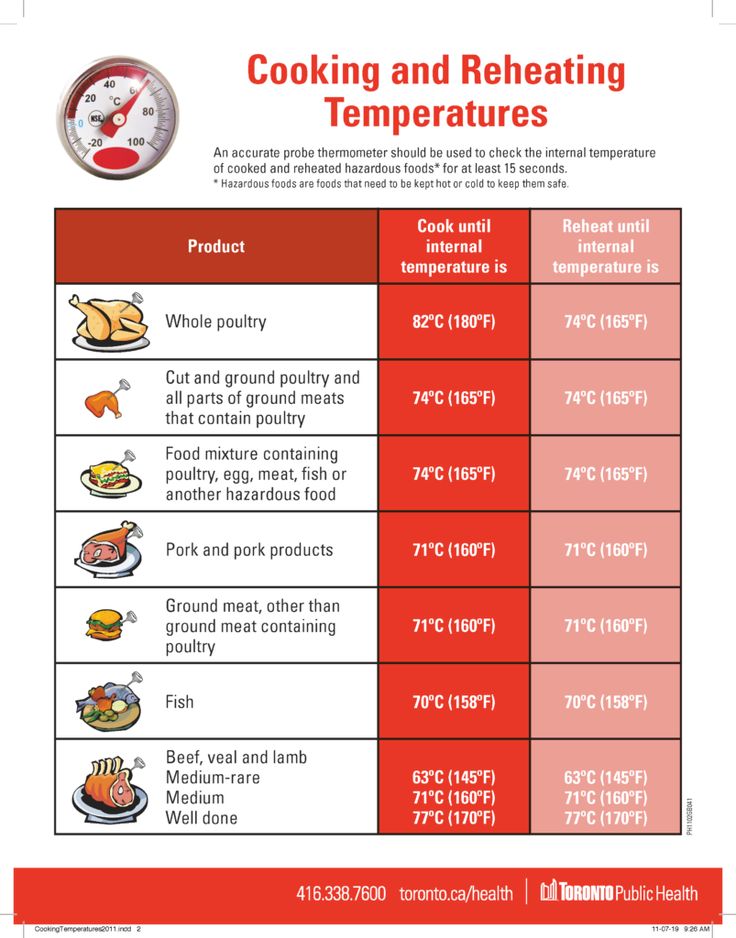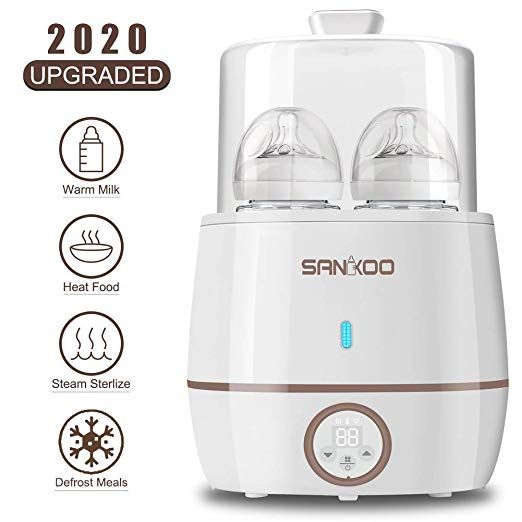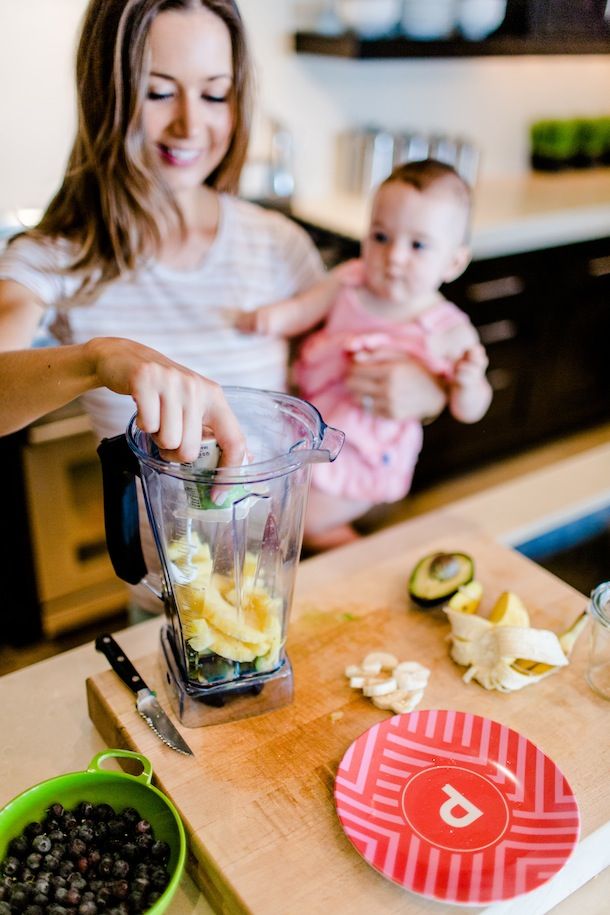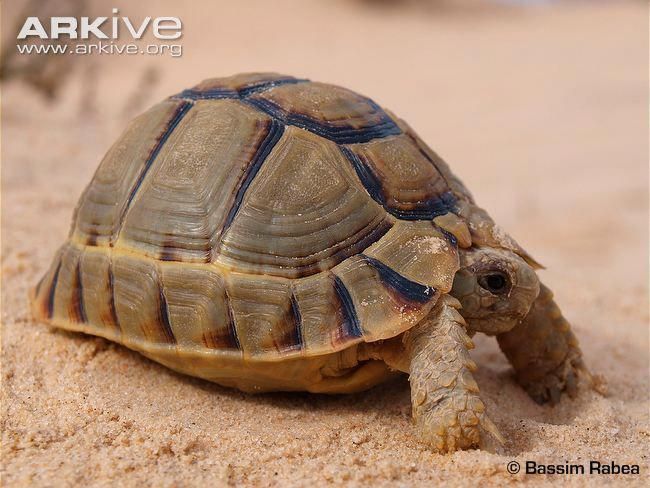Reheating frozen baby food
Heating and Thawing Homemade Baby Food Purees
What is the Best Way to Heat or Thaw Homemade Baby Food Cubes?
There are many ways to heat and thaw homemade baby food. On this page we will tell you all about heating and thawing your homemade baby food cubes.
Thawing and Heating of Homemade Baby Food
When thawing or heating baby food cubes, take out as many cubes that you will feed your baby for 1 or 2 days. Remember to thaw only the amount of food that you will use in a period of 1-3 days as you should not refreeze any leftover food.
Transfer the cubes to a storage container and let the cubes thaw in the refrigerator or you may wish to transfer the cubes to a glass bowl and then thaw them in the microwave. We’ll discuss the various methods of heating and thawing homemade baby food below. Whatever method you choose, please do be sure to always test the temperature of the foods you will be feeding your baby!
Heating Homemade Baby Food
Microwave Heating
Many parents love the ease and convenience of the microwave for both heating and thawing homemade baby food. Whether or not you use the microwave to heat or thaw your homemade baby food is a decision only you can make.
To heat the baby food in the microwave, always transfer the amount of food you will be heating to a glass microwave safe container. You should not use plastic to heat foods in the mircowave. Heat the food in 15 second increments and stir after each heating. When the food has reached the temperature you desire, be sure to give one final stir so that no hot pockets are left to burn baby’s mouth.
Stove Top Heating of Homemade Baby Food
When heating baby food on the stove top, choose a smaller saucepan and place the food into the sauce pan. Gently heat the food using a low setting. Using the lower heat setting will ensure that you do not burn the food.
Do NOT store leftover food from a container that your baby has been eating from. Saliva will contaminate the food and storing leftovers may cause food poisoning.
Microwave Thawing of Homemade Baby Food
Always warm baby food cubes in a glass bowl and not in plastic containers as researchindicates glass is safer. If you are using a microwave to thaw or reheat baby food cubes, be sure to stir food to ensure no hot-pockets are left to burn baby.
If you are using a microwave to thaw or reheat baby food cubes, be sure to stir food to ensure no hot-pockets are left to burn baby.
Many parents do not like to use the microwave for a variety of reasons. It is up to you to decide if heating or thawing your baby food cubes in the microwave is right for you and your baby. If you do not wish to use a microwave to thaw your baby food cubes, you may thaw your baby food cubes in the refrigerator over night (ensure that the cubes remain a closed container and not in an uncovered bowl) as mentioned.
Refrigerator Thawing of Homemade Baby Food Cubes
Thawing baby food cubes in the refrigerator will take longer than using a microwave or the floating/submersion method. You may thaw your baby food cubes in the refrigerator over night (ensure that the cubes remain a closed container and not in an uncovered bowl). This method may take up to 12 hours so do be sure to plan accordingly!
Submersion or Warm Water Thawing of Baby Food Cubes
Thawing baby food cubes using this “submersion method” should take between 10-20 minutes. You may place the cubes in a small bowl and then place the bowl in a larger bowl filled with hot water. You can also do this with a pan of warm water on the stove; add the smaller bowl to a pot of water that you have warmed.
You may place the cubes in a small bowl and then place the bowl in a larger bowl filled with hot water. You can also do this with a pan of warm water on the stove; add the smaller bowl to a pot of water that you have warmed.
Thawing food on your kitchen counter is never recommended as bacteria or other contaminants may get into the food.
You should not feed your baby from the container and then re-store the container that baby has been fed from. Saliva may contaminate the food and bacteria may evolve. Always take the portions you will serve from the container and transfer to a feeding bowl.
Please keep in mind that reheating and serving baby food cubes is warm is NOT necessary. Baby food cubes may be served at room temperature once they have been thawed and then heated.. Many babies enjoy room temperature foods.
How Long is it Safe to Keep Thawed Baby Food in the Refrigerator
Thawed homemade baby food is just like other food that you have cooked, frozen and then thawed. The homemade baby food that you have thawed may safely be kept in the refrigerator for 72 hours maximum. Ensure that the thawed baby food is kept in a sealed container to avoid contamination.
The homemade baby food that you have thawed may safely be kept in the refrigerator for 72 hours maximum. Ensure that the thawed baby food is kept in a sealed container to avoid contamination.
Remember, always consult with your pediatrician regarding introducing solid foods to your baby and specifically discuss any foods that may pose allergy risks for your baby.
This site complies with the HONcode standard for trustworthy health information:
verify here.
SHARE ON FACEBOOK SHARE ON PINTEREST
Food Safety | Go to guide: preparing, freezing and reheating foods for baby
There’s no doubt that there are so many exciting things to think about when you begin your weaning journey with your little one; choosing a highchair, shopping for snazzy bibs, debating which cup and cutlery is best and deciding what amazing tastes to expose your baby to first… but it’s important not to forget that amongst all of this, any food you serve needs to be safe! Babies and young children don’t have the same immune system as us adults (or even older children) so food safety is essential.
 We need to make sure we’re extra careful with their little tummies!It is estimated that there are 2.4 million cases of food-borne illness in the UK every year but it’s not just restaurants that cause food poisoning – cooking at home can also make you (or your family) sick. The good news is that there are so many things you can do whilst preparing food to prevent this happening. Below, we give our top tips for baby food safety.
We need to make sure we’re extra careful with their little tummies!It is estimated that there are 2.4 million cases of food-borne illness in the UK every year but it’s not just restaurants that cause food poisoning – cooking at home can also make you (or your family) sick. The good news is that there are so many things you can do whilst preparing food to prevent this happening. Below, we give our top tips for baby food safety.Keep it clean
When it comes to food safety, keeping clean is so important. In reality, this doesn’t mean having a ‘spotless’ kitchen but instead, a clean environment where you prepare food, with clean hands, using clean equipment! Here are some top tips to help you organise your kitchen and help you safely prepare meals for your baby and the rest of the family:
- Wash your hands – always wash your hands thoroughly before preparing any food, and particularly after handling raw meat
- Clean work surfaces – disinfect food preparation surfaces using a clean dishcloth before starting any food prep.
 If you can, use a paper towel squirted with antibacterial spray to clean surfaces after preparing raw meat and poultry as this will help to make sure that you don’t pick up food poisoning germs and spread them around the kitchen
If you can, use a paper towel squirted with antibacterial spray to clean surfaces after preparing raw meat and poultry as this will help to make sure that you don’t pick up food poisoning germs and spread them around the kitchen - Clean utensils – make sure equipment is clean before you start using it and if you can, opt for colour coded equipment to reduce the risk of cross contamination between raw and ready to eat foods. Never prepare ready to eat food such as salad on a board that was previously used to prepare raw meat
- Wash fruit and veg – they might be low risk foods, but bacteria can also be found on fruit and veggies too so don’t forget to wash these thoroughly under cold running water before serving to baby. If you’re using frozen veggies in baby’s food, make sure that these are cooked according to the back of pack information before serving to your baby.
- Don’t be tempted to wash raw chicken! – washing your chicken will not ‘wash off’ the bacteria (only cooking will make it safe to eat!).
 If you wash chicken, instead you are more likely to cause food poisoning by inadvertently spreading more bacteria around the kitchen.
If you wash chicken, instead you are more likely to cause food poisoning by inadvertently spreading more bacteria around the kitchen.
Food Safety – Cooking food for your baby checklist!
Cooking veggies by steaming, boiling or roasting is pretty straightforward, but those first tastes don’t last for long and you’ll soon be branching out to more exciting foods for your baby to try, many of which may include meat or fish. Regardless of how you serve meat to your little one, it’s important to make sure that it is thoroughly cooked.
Remember – just because it’s cooked on the outside, doesn’t mean it’s cooked on the inside! Here’s how you can check that meat is safe for your baby to eat…
- Use a food probe - checking the temperature of the thickest part of the meat is the most accurate way (and the way I would recommend) to check food is cooked, whilst also making sure it is not overcooked! If using a probe, make sure the probe is clean and the meat has a core temperature of 75C for at least 30 seconds.

- Cut into the thickest part of the meat to make sure there is no pink meat visible
- The meat must be steaming hot throughout
- Meat juices run clear
If you find your baby puree needs thinning after cooking, check out Jenna’s article Top tips for thinning baby purees
Cool foods quickly
I am a huge fan of keeping leftovers to use as an easy meal another day! After cooking, make sure you cool any leftovers and pop into the fridge or freezer as soon as possible. Never allow food to sit out on the side for more than 2 hours after cooking.
Be aware that simply putting your hot food in the fridge may not be enough to make sure it is cooled down quickly and safely. There are lots of things you can do to help speed up the cooling of food, such as dividing into smaller portions, using an ice bath or stirring regularly.
Keep leftovers for another day
Whatever your situation, whether you have children or not… reheating leftovers is always a good idea! As a rule of thumb, leftover food can be kept in the fridge and used within 2 days (1 day for rice) but if you want longer than this, then pop your leftovers in the freezer.
Even if you used raw meat or veg which was previously frozen, once cooked you can freeze the leftovers. Freezing “pauses” the growth of bacteria, locks in nutrients, prevents spoilage and ultimately helps reduce wastage!
Defrosting baby purees
If defrosting baby purees, the best way to do this would be overnight in the fridge and use within 24 hours. But, did you know that you can cook baby purees from frozen?!
Reheating baby purees
Baby purees are often best served at room temperature, but don’t be tempted to partially reheat food for your baby to avoid having to wait for it to cool. Unless served cold straight from the fridge, baby purees should always be reheated until piping hot, which means steaming throughout, to kill off bacteria.
The best ways to reheat baby purees are:
- On the hob
- In the microwave
If cooking a portion of baby puree from frozen, make sure you increase the cooking time and stir regularly (every 20 – 30 seconds) to ensure there are no hidden hot spots and that the puree is evenly heated so it is piping hot throughout.
Remember that foods can only be reheated once so make sure you divide your puree into baby friendly portions before storing in the fridge or freezer!
We hope these tips and tricks have helped you become more confident when it comes to food safety for your little ones!
Jenna is a fully qualified Environmental Health Practitioner specialising in food safety and public health.
She obtained a first-class Batchelor (BSc) degree in Environmental Health and has since qualified as an Environmental Health Practitioner with the Chartered Institute of Environmental Health (CIEH). Over the past 12 years she has worked in both the public and private sector advising businesses on all things food safety and public health.
Since becoming a Mum to her 2-year-old little girl Mia, she understands first-hand how much things change when you have a little one to think about too! She has always been passionate about food safety and her mission as Food Safety Mum is to help give parents confidence when cooking at home or when eating out and about!
For lots more food safety advice, follow Jenna on Instagram
@Foodsafetymum
Do you reheat baby food after it has been in the refrigerator?
Baby puree is often best served at room temperature, but resist the temptation to partially heat your baby's food so you don't have to wait for it to cool. Unless served cold straight out of the refrigerator, baby puree should always be reheated to hot which means steaming to kill bacteria.
Unless served cold straight out of the refrigerator, baby puree should always be reheated to hot which means steaming to kill bacteria.
Also, does freezing baby food lose nutrients?
Frozen food can be just as nutritious as fresh food. Fruits and vegetables harvested at peak frozen immediately retain their nutrients longer than fresh foods, which tend to lose nutrients if not used immediately.
Secondly, is it possible to reheat baby food?
Warming: Baby food can be served cold, at room temperature, or slightly warmed . Chilled or frozen homemade baby food should be thoroughly reheated to at least 165°F before serving to a child.
Also, is it harmful to heat baby food in the microwave? Do not heat the baby - meat products, meat sticks or eggs in the microwave. Instead, use a stovetop. These foods are high in fat, and since microwaves heat fat faster than other substances, these foods can cause splattering and overheating.
So you need to reheat frozen baby food?
Please note that reheating and serving baby food cubes heat is NOT needed . Baby food cubes can be served at room temperature after they have been thawed and then reheated. Many children like food at room temperature.
Can frozen vegetables be used for baby food?
Raw fruits and vegetables have no added ingredients or preservatives and are full of nutrients and fiber. … So Yes , you can make baby food from frozen vegetables without sacrificing taste, nutrition or convenience, and without adding preservatives to your baby's food.
Contents
Is it harmful to freeze baby food?
When properly handled, frozen baby food will be as nutritious and healthy as fresh food. This means that food must be thoroughly washed, frozen immediately after collection and wrapped tightly. The advantage of using properly frozen foods is that they keep longer.
Are frozen vegetables healthy for a child?
Yes. You can use frozen fruits and vegetables to make homemade baby food recipes. Frozen fruits and vegetables for homemade baby food can be a better alternative to fresh ones. Frozen fruits and vegetables may be fresher than fresh ones.
You can use frozen fruits and vegetables to make homemade baby food recipes. Frozen fruits and vegetables for homemade baby food can be a better alternative to fresh ones. Frozen fruits and vegetables may be fresher than fresh ones.
Can you save leftover baby food?
Homemade baby food keeps one to two days in the refrigerator and three to four months in the freezer. Please remember that once commercial blends or products are opened, you must use them immediately and quickly refrigerate the unused portion after you are done.
Can I reheat Gerber baby food?
Do I need to reheat baby food? No. All baby food can be served cold, warm or at room temperature. … But you can warm chilled food to room temperature.
Can children eat cold chicken?
It is medically safe to serve food that has not been reheated. Whether you reheat food or serve it cold is not so much a health issue as it is one of your child's preferences.
Does microwaving baby food destroy nutrients?
There is nothing about microwaves that damages food more than other cooking methods. In fact, a microwave oven can actually conserve nutrients. Boiling vegetables leaches soluble vitamins into the cooking water, and in the oven, food is subjected to much longer cooking times and higher temperatures.
Can I give my baby rice in the microwave?
Find out why heated rice can cause food poisoning. … When reheating food, make sure it is completely hot and then let it cool before giving it to your baby. If you are using a microwave, always stir food and check the temperature before giving it to a child.
Is it safe to defrost baby food in the microwave?
After defrosting, divide food into individual bowls, cover and refrigerate until serving. Defrost food in the microwave: Place frozen cubes or strips in a microwave-safe dish and microwave on the DEFROST setting. Stir and turn foods often.
Stir and turn foods often.
Can frozen foods be used to make baby food?
Yes. You can use frozen fruits and vegetables to make homemade baby food recipes. … Frozen fruits and vegetables may be fresher than fresh ones. Many sources and authorities say that often frozen food is more "fresh" than fresh.
What is a good first meal for babies?
Best first meal for baby: puree
- Fried sweet potato puree.
- Avocado puree.
- Puree banana puree.
- Butternut squash puree.
- Applesauce, unsweetened.
- Pea puree.
- Baby oatmeal (with added iron)
Can I use frozen broccoli for baby food?
You can make frozen baby broccoli puree using the same steaming method. It works well with both fresh and frozen buds. When can you give broccoli to a child? You can give your baby broccoli after he is 6 months old, which is the age at which the American Academy of Pediatrics (AAP) recommends weaning.
Can I use frozen green beans for baby food?
Baby Food Expert Tips
Use frozen green beans to cut cooking time. Make sure you mash the green beans long enough to make a completely smooth puree. If you've steamed beans, add fresh, filtered water to a blender or food processor before pureeing. … It will be ready for the child the next day.
Can baby food jars be frozen?
Freezing commercial baby food
Gerber recommends not freezing baby food because it can ruin the texture and the packaging is not suitable for freezing. Glass baby food jars can crack in the freezer as food expands and plastic containers are not designed to keep food well.
How long is Gerber baby food good for after opening?
Opened solid baby food can be stored in the refrigerator for up to three days. Strained fruits and vegetables can be refrigerated for two to three days and stored in the freezer for six to eight months.
What should I do with leftover baby food?
10 baby food puree ideas
- Mix fruit and vegetable purees with plain whole milk yogurt, cottage cheese and oatmeal. …
- Add vegetable purees to sauces and pestos. …
- Mix vegetable purees with meatballs and meatloaf. …
- Add vegetable puree to soups or stews.
- Use them as teethers. …
- Make smoothies out of them.
Can I freeze leftover baby food?
You can also freeze store-bought baby food. Gerber recommends not freezing baby food because it can ruin the texture and their packaging is not suitable for freezing. Glass baby food jars can crack in the freezer as food expands and plastic containers are not designed to keep food well.
Why do bags of baby food last only 24 hours?
According to Gerber, baby food bags should be thrown away after 24 hours, regardless of what they contain. … Care.com noted that baby food is particularly prone to spoilage because it does not contain the preservatives found in many packaged adult foods.
… Care.com noted that baby food is particularly prone to spoilage because it does not contain the preservatives found in many packaged adult foods.
Editors. 23 - Last updated. 5 days ago – Authors. 4
Defrosting and serving baby food. Your baby from birth to two years old
Defrosting and serving baby food. Your baby from birth to two yearsWikiReading
Your baby from birth to two years old
Sears Marta
Contents
Defrosting and serving baby food
Frozen meals should not be thawed at room temperature for long periods of time. When it's time to use frozen baby food, try these tips:
• For slow defrosting, place one serving or a whole day's supply in the refrigerator for three to four hours.
• Use an electric defrost to quickly defrost, or place a frozen cube or open jar in a heat-resistant small container and place in a small saucepan. Fill the pot with water just short of the rim of the food container. Defrost and reheat over medium heat, stirring occasionally to heat evenly.
Fill the pot with water just short of the rim of the food container. Defrost and reheat over medium heat, stirring occasionally to heat evenly.
• Before giving baby food to a baby, be sure to mix it thoroughly and taste to make sure there are no areas too hot for the baby. Touch the product with your upper lip each time you load another spoon. Even the smallest amount of food that is too hot can teach a child not to trust what lies in the spoon approaching him. You can better check the temperature with your finger.
• Because microwave heating can create hot spots in food that can burn your child's mouth, we do not recommend this method. If you choose a microwave, be very careful to stir and always try a little yourself to see if the food is evenly heated before feeding your baby.
• To avoid wasting food, spoon-feed your baby the portion you think he or she can handle. If he wants more, use a clean spoon to place the topping on his plate. You can store the rest of the dish in the refrigerator for two days, but only if saliva does not get into it.
Some babies don't eat "baby food" at all, and all this information on how to make it can be skipped if your baby tolerates a fairly firm texture, refuses solid foods for a long time, can't stand being spoon-fed, or transitions immediately to hand feeding. Some mothers really go into making baby food; others simply cook for the whole family and mash a portion for the child with a fork.
This text is an introductory fragment.
Table and chair
Table and chair Do two exercises with your child and ask him to guess where the chair turned out and where the table turned out. Riddle No. 1: Place your left palm vertically up. From below, put the fist of your right hand with your thumb towards you. (Chair) Riddle #2: Clench your left hand into a fist. Top
Top
Tip 12 More variety, please
Tip 12 More variety on the table, please Almost like adults These adults are strange people - we are with you. We trumpet on all corners that food should be as diverse as possible: only in this way, they say, the body will receive everything it needs. For breakfast we eat one thing, for lunch - another, for dinner
Power mode
Diet • Food should be fresh and look appetizing. • It is very important that meals take place at the same time. Then you will be able to ensure a regular supply of nutrients to build the growing tissues of the fetus, uterus, mammary glands, amniotic
Manufactured baby foods
Industrial baby food products What applies to baby food products of industrial production for children of the first year of life • Canned fruit, vegetable and fruit and vegetable juices and purees. • Dry instant cereals and
• Dry instant cereals and
Level 3: Submission
Level 3: Submission The methods of presenting impromptu speeches are not much different from presenting prepared speeches. At the third level, you will work on gestures, pauses, eye contact, intonation, and other delivery methods. The goal of this level is
"To the table!"
"To the table!" The rhythm of the life of a French family is built around this sacred phrase, because the ritual of eating at a common table is the most important moment in learning good manners. It hardly needs to be reminded that the main dishes of French cuisine must be served and tasted
They put him at the table, and he put his feet on the table
They put him at the table, and he put his feet on the table It happens. We just can’t stand it, just to eat. And antics, and fidgeting in a chair, and a pigsty in a plate. Again, let's look into the dining room, where they dine in silence and peace, without quarrels and antics. But here is a two-year-old little girl acting up at the table,
We just can’t stand it, just to eat. And antics, and fidgeting in a chair, and a pigsty in a plate. Again, let's look into the dining room, where they dine in silence and peace, without quarrels and antics. But here is a two-year-old little girl acting up at the table,
2.3. Round table for teenagers: "How do friendships develop and sometimes break?"
2.3. Round table for teenagers: "How do friendships develop and sometimes break?" For modern teenagers, it is more difficult to get to know each other even in the courtyard of the house on the playground than for the previous generation of children. Gone are many traditions of courtyard games, which in
Help the nanny set the table
Help the nanny set the table They want to have breakfast in the group, Everyone around is in a hurry to help Carry dishes on the tables. Only the Hedgehog said: - I won't! I won't go, I'll sit And I will look at you! I don't want to help Better to just wait. It's unpleasant for everyone. All Hedgehog
Only the Hedgehog said: - I won't! I won't go, I'll sit And I will look at you! I don't want to help Better to just wait. It's unpleasant for everyone. All Hedgehog
Wash your hands before you sit down to eat
Before you sit down at the table, wash your hands On the birthday of the Frog Her friends gathered. frolicked, played And then they began to have lunch. Only one thing was forgotten: The guests didn't wash their hands! Treats at the tables They took it with dirty hands. And the frog, probably It was
Making your own baby food
Making baby food with your own hands Good nutrition, or lack thereof, can have an impact on your child's health and behavior. It's worth spending a couple of hours a week preparing meals for your child. You know what it's made of and you can cook
Packaging and storage of homemade baby food
Packaging and storage of homemade baby food Store your home-cooked meals in the freezer.











